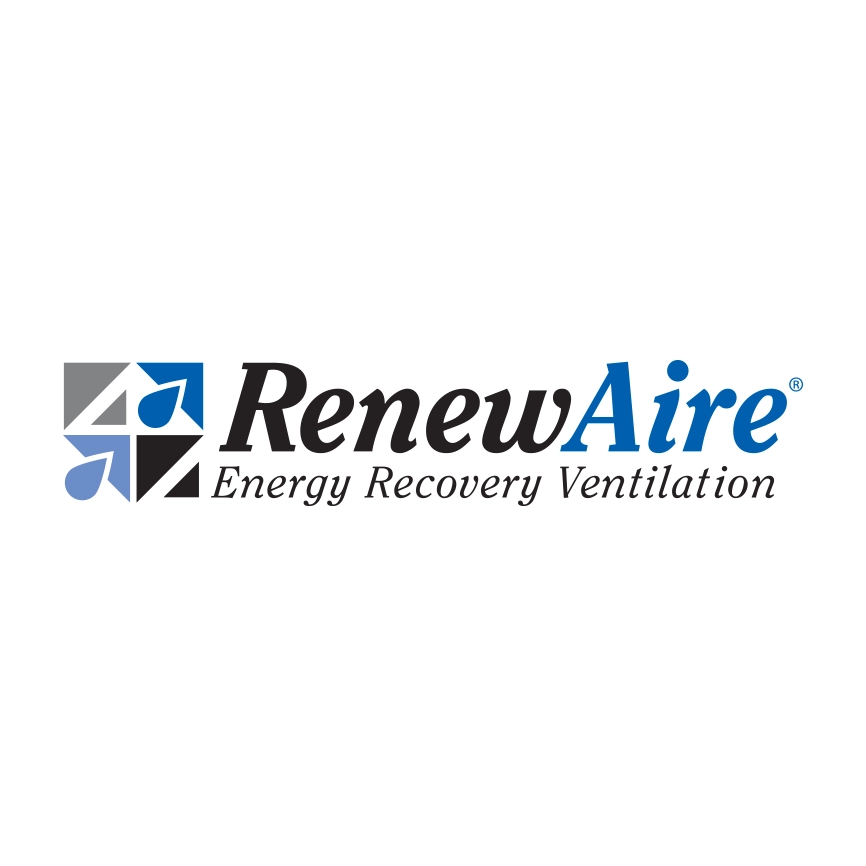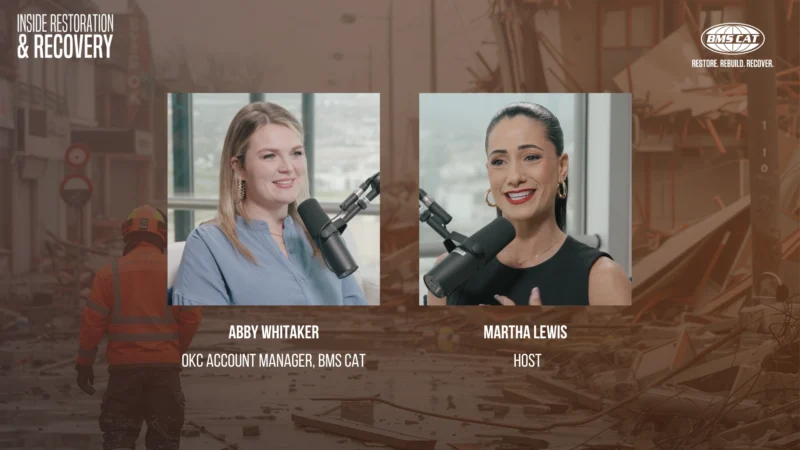Support Decarbonization with Enhanced Ventilation via ERVs and DOAS
The latest episode of “IAQ IQ: Indoor Air Quality & You” examined how enhanced ventilation via energy recovery ventilators (ERVs) and dedicated outdoor air systems (DOAS) can support decarbonization. Conducted in conjunction with New York State Energy Research and Development Authority (NYSERDA), the podcast showcased three participants. Host, Michelle Dawn Mooney spoke with Michael Reed, Head of Large Buildings, Advanced Energy Solutions, NYSERDA; Alex Smith, Mid-Atlantic Regional Sales Director, RenewAire and Nick Agopian. Below are the key points raised during the podcast and a summary of the discussion.
Key Points:
- Utilizing ERVs and DOAS is an effective strategy for supporting decarbonization
- A DOAS meets minimum ventilation requirements and handles the total latent load
- NYSERDA has a new program incentivizing the use of ERVs and DOAS
What is NYSERDA?
Before we jump into the content of the podcast, let’s take a quick look at NYSERDA. Since its founding in 1975, NYSERDA has worked to promote energy efficiency, renewable energy and emissions reduction across New York’s economy and energy system. In addition to supporting clean energy and technologies, the organization is working to advance equity and inclusivity, jobs and economic development, public health and community resilience.
What is decarbonization as it relates to the built environment?
Kicking off the podcast was Reed who explained decarbonization. “It means reducing and eventually eliminating greenhouse-gas (GHG) emissions. When it comes to buildings, decarbonization means phasing out a reliance on fossil fuels typically for heating and hot water.”
How is decarbonization made possible in the built environment? Reed continued, “This is accomplished through reducing overall needs for energy via measures such as envelope improvements and advanced controls, recovering and reusing heat that would otherwise be wasted and replacing carbon intensive equipment like fossil-fuel combustion with heat-pump systems.”
How can building engineers address decarbonization?
Building engineers can play a key role in supporting decarbonization said Smith, but first he explained the severity of the issue. “The built environment is responsible for almost 50% of carbon (CO2) emissions into the atmosphere. Within the built environment, over half of the total is the operation of the building. This process incorporates the HVAC, which is the biggest energy hog in a building’s operation.”
Smith continued with some strategies building engineers can apply to address decarbonization. “There are a number of initiatives that can be taken, such as LED lighting and architectural features to help with solar load. But the main thing that should be the point of focus is the HVAC system.”
What specifically can engineers do with the HVAC system to support decarbonization? Smith explained the options. “There are a number of HVAC strategies. We’re seeing more heat pumps being used, whether air to air or water to air. Also energy recovery, which is particularly important when it comes to buildings with existing equipment not designed to allow for the increased ventilation we need for occupant health and better IAQ.”
Smith went on and explained that handling humidity is a key challenge of conventional systems. “Such equipment is not designed to dehumidify outdoor air, so what you can do is introduce energy recovery to mitigate the outdoor air load on existing equipment. This allows it to operate more efficiently and with less parasitic energy. Energy recovery is particularly important especially when it comes to retrofits of existing buildings.”
What is decoupling and why is it well suited for energy recovery?
To achieve high-level IAQ, as much outdoor air as possible needs to be brought indoors. However, conventional systems can’t handle this load. Therefore, the outdoor air must be handled by another system. Smith explained this concept in more detail. “We’ve discussed that standard AC equipment is not designed to dehumidify a high percentage (or 100%) outdoor air. If you add an energy recovery unit to the front end of existing equipment, that’s a big help because the energy recovery component can partially cool and partially dehumidify that outdoor air and then send it to the existing ac equipment. This eases the load and allows it to operate more efficiently.”
“But even in those circumstances, the amount of outdoor air you can bring in is still limited. The problem is if you have high percentage or 100% outdoor air, that strategy will not work. In that case, we must use a dedicated outdoor air system (DOAS). A DOAS is distinct from existing equipment because it’s designed specifically for dehumidifying 100% outdoor air. It comes down to two things: A DOAS must provide the minimum ventilation requirement and be capable of dehumidifying the entire latent load, which is from both the outdoor air and people in the space.”
Thus, what exactly is decoupling? Smith continued to explain this concept. “A DOAS is designed to work in conjunction with the existing AC unit that’s servicing the space. What we’re doing is separating—or decoupling—the latent load from the AC unit and putting it onto the DOAS. The result is the zone unit or AC system that’s serving the space only has to cool the sensible load.” Consequently, energy efficiency in the HVAC process is optimized.
What is the goal of the new NYSERDA program, “Enhanced Ventilation: ERV +DOAS”?
Wrapping up the podcast was Reed who reviewed the new NYSERDA program, Enhanced Ventilation: ERV +DOAS. “The goal of the program is to shine a giant spotlight on this heat recovery opportunity that exists in New York City and New York State. We want to get the private sector to seize on this opportunity, create repeatable solutions and deploy those solutions across the built environment.”
One of the main barriers to adoption for energy-efficient systems is cost, and that’s where this NYSERDA program comes in. “That type of work requires an upfront investment and we’re trying to use public ratepayer dollars to get the industry started on this opportunity area,” said Reed. “We hope to create resources to help others in this industry follow the leaders and drive an increase in market share to manufacturers and other solution providers who are able to solve this problem.”




